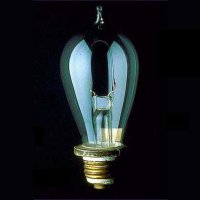Green STEM Initiatives Spark Innovative Learning
Your content has been saved!
Go to My Saved Content.Today marks the birthday of Thomas Edison, that American icon of innovation. At a time when the U.S. is facing a critical shortage of students interested in science, technology, engineering, and math, it's worth remembering how Edison built a pipeline of thinkers who tackled the STEM challenges of their time.
In his Menlo Park, New Jersey, invention factory, Edison assembled an interdisciplinary team of engineers, chemists, mathematicians, glass blowers, and even a press team to spread the word about breakthroughs. The two-story workshop featured state-of-the-art equipment along with a pipe organ where employees could gather for sing-alongs to refresh their spirits. Not content to invent a better light bulb, Edison designed a whole system for engineering ideas.
How might we encourage more high-energy, cross-disciplinary thinking among today's students? One place worth checking out is the environmental education classroom, where STEM education is going green.
Greening STEM: What It Looks Like
Environmental Education Week, coming up April 14-20, focuses this year on the theme of Greening STEM: Taking Technology Outdoors. Hosted by the National Environmental Education Foundation, EE Week encourages real-world learning and problem solving both inside and outside the classroom.
This year's event leverages student interest in mobile technologies to help students "plug into nature," according to Sarah Kozicki, education program coordinator for NEEF. "While young people are increasingly concerned about their environment, they also feel more and more disconnected from it. Technology can help young people observe and collect data about their local environments," she says.
As an example, Kozicki points to Islesboro Central School in Maine, where students use technology to document the ecological condition of nature preserves near their school. Mobile apps enable them to learn from scientists and others around the globe, and also contribute to conservation efforts. To see these innovative students in action, watch the video, Using Technology to Connect Students and the Environment.
Several applications support environmental study on mobile devices. NEEF has put together a guide to Top 10 Apps for Taking Technology Outdoors.
Building the Pipeline
Deborah Wasylik, science teacher at Dr. Phillips High School in Orlando, Florida, is another advocate for using environmental studies to build a STEM pipeline. Recipient of the Richard C. Bartlett Environmental Education Award in 2012, Wasylik says students who have not been enthusiastic about science in the past "see the many real-world applications of environmental science. This is a subject many students are passionate about, especially girls. They want to save the planet." Environmental science "fuses all the elements of STEM." When given a chance to work on green STEM projects, she adds, many students "are willing to take another look at science."
Beyond her AP environmental science classes, Wasylik encourages service-learning opportunities to spark interest among the school's 3,600 diverse learners. She works with an Eco Action Team, which takes on earth-friendly projects, often in collaboration with the city of Orlando. The team's first initiative was to start a campus recycling project. "Then students said, 'Let's do more.' And so we did." For teens growing up in an urban area, outdoor projects give them a chance "to get their hands dirty, put on boots and wade into lakes, and see that they can make a difference," Wasylik says.
Wasylik also spreads the green message to her colleagues, encouraging them to make cross-disciplinary connections to environmental science. "If you're teaching US History, you can't talk about the railroad expansion without considering big-time environmental considerations. If you're teaching human geography, you focus on urbanization. Of course, the other side of urbanization is the destruction of habitat," she points out. She encourages English teachers to consider including writers like Thoreau, Rachel Carson, and Upton Sinclair "as examples of environmental writers who have influenced America."
Where might students go with a green STEM background? Wasylik's former students are pursuing a wide range of careers that enable them "to pursue their passion for environmental education and find an application." One former student is going into nursing, with plans to encourage sustainability measures in hospital settings. Another is using his business degree to assess potential investments against environmental standards. Yet another is doing graduate work in biomedical engineering, preparing for a career in a cutting-edge field.
"Every single profession has an environmental aspect to it," Wasylik insists. "You see the applications and opportunities everywhere you look."
For updates about this year's Greening STEM events, register for EE Week and connect with Classroom Earth on Facebook and Twitter.
What are you doing to encourage students to enter the STEM pipeline? How are you creating an imagination factory in your school? Please tell us about your ideas in the comments.
